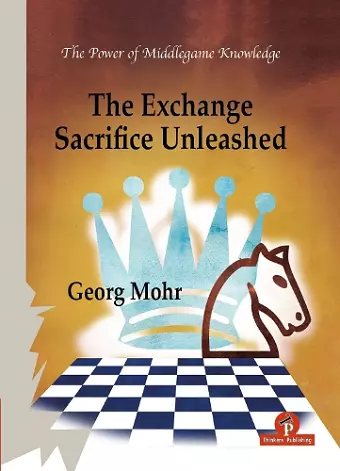The Exchange Sacrifice Unleashed
Power of Middlegame Knowledge
Format:Hardback
Publisher:Thinkers Publishing
Published:20th Jun '23
Currently unavailable, and unfortunately no date known when it will be back

- · Compensation is a chess concept that we only fully understand when we enter the world of serious chess.
- · The relative value of pieces is perhaps the most difficult chess concept of all to explain.
- · It is one that every player must feel and believe in and can only be accepted with the help of our own practice, and when we feel it come together as though a part of us.
- · Why so much talk about such or similar sacrifices? Quite simply because we are afraid! We have been taught, and practice shows and proves the clear fact, that the closer we get to the last part of the game, the ending, the more pronounced a material advantage becomes.
- · If in the middlegame we can still hope for sudden turns, for the influence of other pieces, this is negligible in the endgame.
- · Maybe less so with tactical sacrifices, where we immediately see what the sacrificer gets in return.
- · How can we not accept the rook that the opponent offers us, when there is nothing concrete to see? One or two weaknesses perhaps, but they can be eliminated, and the material advantage and a secure victory in the endgame remains.
The book you have just started reading is about a very interesting and difficult concept: the exchange sacrifice. This is the moment in chess when basic mathematics breaks down, the moment when 3 counts equal to or even more than 5. So let us leave the mathematics aside and try to figure out why this simple calculation is so difficult to understand. The answer is largely hidden in psychology, as the ninth World Champion, Tigran Petrosian, has often told us, as the man who brought this strategic-tactical chess concept to its first peak. Chess beginners were taught the value of pieces by their teachers (parents, grandparents, perhaps at school or even later in the beginners’ sections of chess clubs). We explain the difference between piece values to children in the simplest way possible, with the help of a unit of measurement, and in chess those units are the pawns. They tell us that a rook is worth five pawns (units) and a knight and a bishop are worth about three each. They also tell us to always be careful, especially during exchanges, to ensure we take at least as much from our opponent as he or she took from us. So, one rook at a time, perhaps for a bishop and a knight next to two pawns. This “chess thinking” is done quickly and very strongly subconsciously in most, one could even say all. Therefore, when choosing moves, we will automatically reject unfavorable exchanges. But who trades a queen for a knight, a bishop for a pawn, and the like? We know from our own life experience that it is better to have ten coins in our pocket than three, and I prefer three to one! This psychological barrier is the most difficult step in making the decision to sacrifice. And so it is with the sacrifice of an exchange. Five for three, that is! Even five for four, if we get a pawn for the rook along with the knight or the bishop. “I am not stupid,” you think. The Exchange Sacrifice Unleashed brings different games or coaches try to explain this and that to us, we see that a material advantage is not always something to celebrate about.
ISBN: 9789464201864
Dimensions: unknown
Weight: unknown
496 pages
New edition